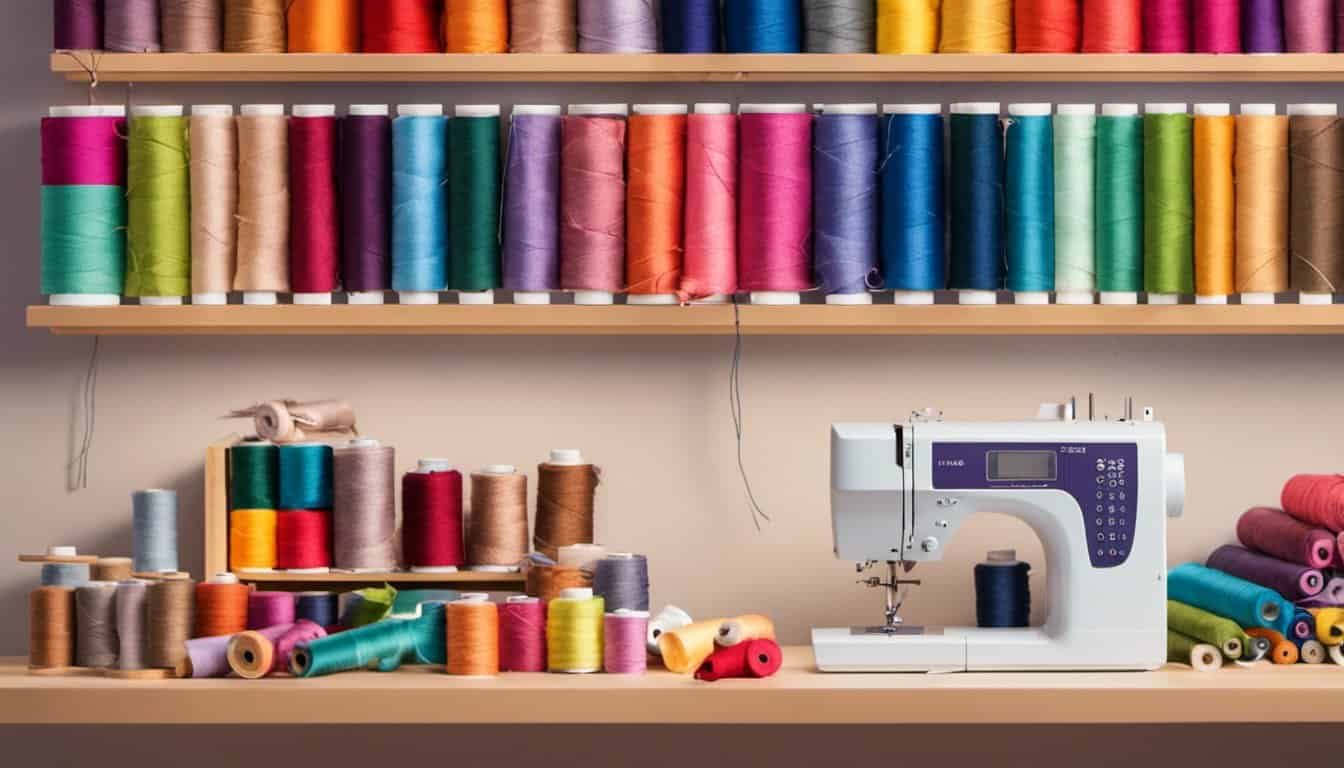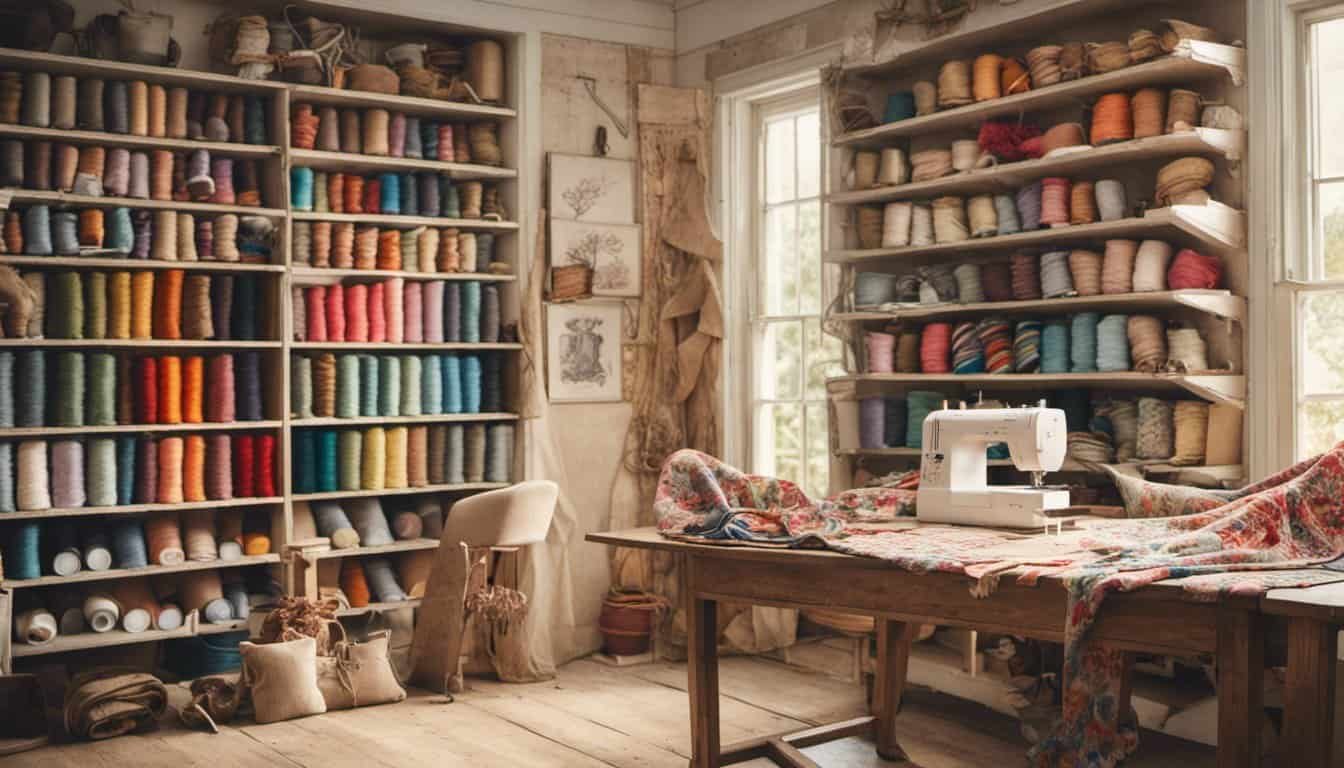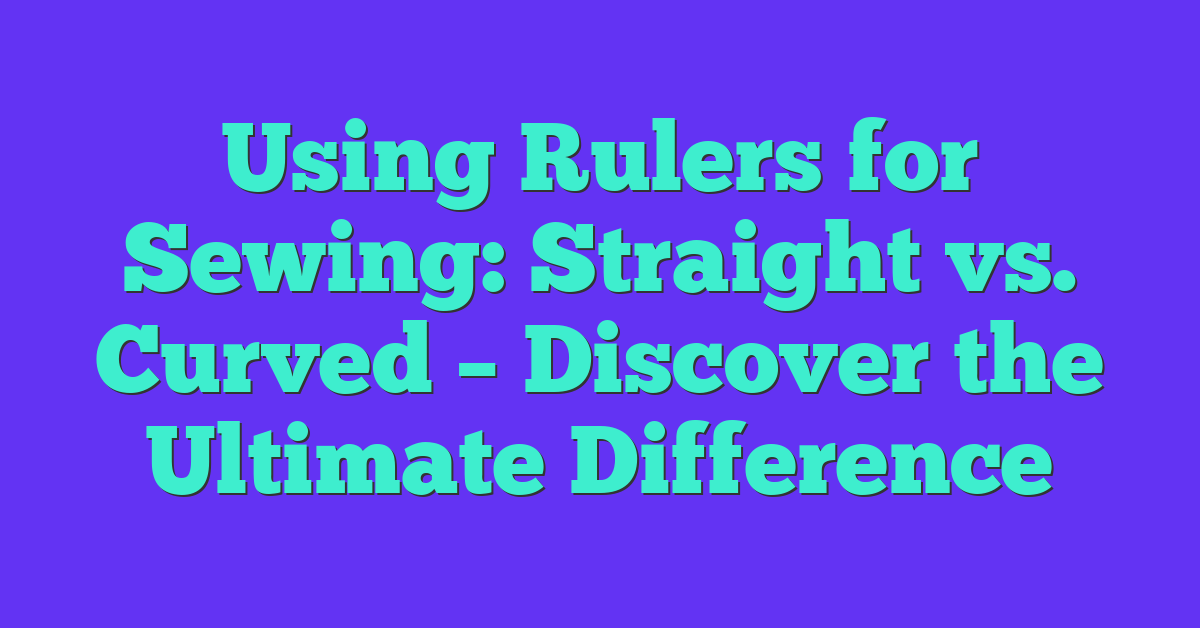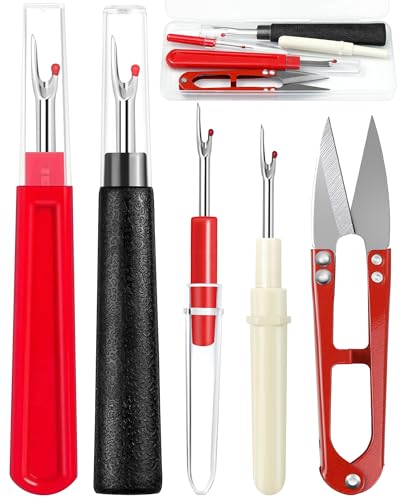When you dive into the world of sewing, precision becomes your best friend. Using the right tools can make all the difference, and rulers are no exception.
Whether you’re lining up straight seams or crafting elegant curves, understanding which ruler to use can elevate your projects. A straight ruler ensures perfect lines, while a curved ruler helps you navigate those tricky bends and arcs with ease.
By choosing the right type for each task, you’ll enhance your craftsmanship and achieve professional-looking results. Let’s explore how these essential tools can help you master your sewing projects with confidence.
Importance Of Rulers In Sewing
Rulers guarantee precision in your sewing projects, leading to professional-quality results. Accurate measurements eliminate mistakes, allowing you to cut fabric and trace patterns flawlessly. Consistency across projects enhances your craftsmanship and ensures each piece meets your standards.
Straight rulers create exact lines, essential for aligning fabric pieces and ensuring seams remain straight. Curved rulers handle bends and arcs, necessary for patterns with curves like sleeves or collars. Both types expand your creative options, enabling diverse design possibilities.
Integrating rulers into your workflow saves time by streamlining cutting and marking processes. Clear guidelines for seam allowances, hems, and darts reduce fabric waste, optimizing material usage. Utilizing rulers effectively improves efficiency, resulting in cleaner, polished finishes on your sewing projects.
Types Of Sewing Rulers
Choosing the right sewing ruler enhances precision and efficiency in your projects. Understanding each type ensures accurate measurements and flawless results.
Straight Rulers
Straight rulers provide exact measurements for cutting fabric and marking seams. They come in various materials like plastic, metal, or acrylic to suit different fabric types. Examples include:
- Metal Rulers: Offer durability and precise edges for sharp lines.
- Clear Plastic Rulers: Allow visibility of fabric layers beneath for accurate alignment.
- Flexible Acrylic Rulers: Bend slightly without losing shape, ideal for intricate patterns.
Using a straight ruler ensures consistent seam allowances, straight hems, and perfectly aligned fabric pieces.
Curved Rulers
Curved rulers accommodate designs with bends and arcs, essential for sleeves, collars, and curved hems. They vary in radius to match different curve requirements. Examples include:
- French Curve Rulers: Provide multiple curves for versatile pattern adjustments.
- Flexible Curved Rulers: Adapt to various fabric thicknesses and project needs.
- Stainless Steel Curved Rulers: Offer rigidity and precision for detailed curve work.
Incorporating a curved ruler into your sewing toolkit allows for smooth, accurate curves and enhances the overall quality of your garments.
Applications Of Straight Rulers
Straight rulers serve multiple purposes in sewing, enhancing precision and efficiency in your projects.
Measuring and Marking Fabric
Accurate measurements prevent fabric waste. Use a straight ruler to mark seam allowances, hems, and darts with clear, precise lines.
Cutting Straight Lines
Ensure clean, straight cuts by guiding fabric with a rigid ruler. This technique results in even edges and professional finishes.

Aligning Fabric Pieces
Align fabric layers accurately. Place the ruler along edges or patterns to maintain consistent placement and prevent misalignment.
Creating Straight Seams
Maintain uniform seam lines. A straight ruler helps guide stitching, ensuring seams remain parallel and evenly spaced.
Tracing Patterns
Transfer pattern lines accurately onto fabric. A straight ruler ensures that traced lines are straight and align with the design specifications.
Measuring Hem Lengths
Achieve consistent hem lengths. Use the ruler to measure and mark precise points, ensuring hems are even on all sides.
Drawing Cutting Lines
Create exact cutting guidelines. Place the ruler along the desired path and draw with a fabric pencil or chalk for accurate cuts.
Ensuring Straight Hems
« Create Comfort and Change Lives: Sew Pillowcases for Children’s Charities Today
10 Best Sewing Challenges to Join Online That Will Transform Your Skills »
Keep hems straight and uniform. A straight ruler guides your stitching or folding, resulting in neat and even hems.
Marking Button Placement
Position buttons accurately. Measure distances from edges or seams using the ruler to ensure symmetrical placement.
Lining and Facing
Install linings and facings neatly. Use a straight ruler to align these components with the garment’s edges for a clean interior finish.
Creating Pleats and Folds
Achieve precise pleats and folds. Use the ruler to mark fold lines, ensuring uniformity and neatness in your designs.
Measuring Fabric Widths
Determine fabric widths accurately. A straight ruler provides exact measurements, aiding in layout planning and pattern placement.

By utilizing straight rulers in these applications, you enhance the accuracy and quality of your sewing projects, leading to professional and polished results.
Applications Of Curved Rulers
Curved rulers enhance your sewing projects by enabling precise measurements and smooth lines for intricate designs. Here are key applications where curved rulers prove indispensable:
Drafting Patterns with Curves
- Sleeves and Collars: Shape smooth arcs for comfortable fits.
- Darts and Pleats: Create accurate curves for tailored silhouettes.
- Gathers and Ruffles: Design consistent, even folds for decorative elements.
Tracing Fabric Patterns
- Complex Shapes: Accurately outline patterns with multiple curves.
- Adjusting Fit: Modify patterns to achieve the desired garment fit.
- Symmetrical Designs: Ensure both sides of a pattern mirror each other precisely.
Cutting Fabric with Precision
- Smooth Edges: Achieve clean, curved cuts without jagged lines.
- Consistent Curves: Maintain uniform curvature across multiple pieces.
- Intricate Details: Handle delicate fabric sections requiring careful cutting.
Marking Seam Allowances
- Curved Seams: Clearly define seam lines that follow garment contours.
- Button Holes: Precisely mark areas for button placement along curves.
- Facing and Lining: Ensure accurate alignment of curved facings and linings.
Creating Decorative Elements
- Embroidery Guides: Outline curved embroidery patterns with accuracy.
- Appliqué Shapes: Cut precise curved shapes for applique designs.
- Trim Details: Design smooth, decorative trims that enhance the garment’s appearance.
Adjusting Patterns for Customization
- Altering Fit: Modify existing patterns to better suit individual measurements.
- Design Enhancements: Add unique curves to standard patterns for a personalized touch.
- Fabric Manipulation: Adapt patterns to different fabric types, ensuring flexibility in design.
Enhancing Garment Construction
- Pleating Techniques: Implement accurate pleats that align with garment curves.
- Seam Finishing: Ensure seamless integration of curved seams for a professional look.
- Layering Fabrics: Manage overlapping fabrics with precise curve measurements.
Utilizing curved rulers in these applications streamlines your sewing process, reduces fabric waste, and ensures professional-quality results. By mastering the use of curved rulers, you expand your creative possibilities and achieve meticulous craftsmanship in every project.
Choosing The Right Ruler For Your Projects
Selecting the appropriate ruler enhances the precision and efficiency of your sewing projects. Consider the following factors to determine which ruler best suits your needs:
Material and Durability
- Metal Rulers: Offer rigidity and longevity, ideal for heavy fabric and repeated use.
- Clear Plastic Rulers: Provide flexibility and visibility, perfect for tracing patterns and aligning fabric pieces.
- Flexible Acrylic Rulers: Combine durability with pliability, suitable for both straight and slightly curved lines.
Measurement Precision
- Graduation Marks: Ensure rulers have clear, accurate markings in both inches and centimeters for versatile use.
- Edge Smoothness: A smooth edge allows for precise cutting and marking without snagging fabric.
Specific Project Requirements
- Straight Rulers: Essential for creating straight seams, hems, and aligning fabric pieces. Use for tasks like measuring seam allowances and cutting straight lines.
- Curved Rulers: Necessary for drafting patterns with curves, such as sleeves and collars. Ideal for tracing complex shapes and creating smooth arcs in garment construction.
Ease of Use
- Weight: Lightweight rulers are easier to maneuver, especially when working with large fabric pieces.
- Size: Choose a ruler length that accommodates the dimensions of your projects without frequent repositioning.
Versatility
- Multi-Functional Rulers: Some rulers combine straight and curved edges, offering flexibility for various sewing tasks.
- Specialized Rulers: Consider rulers designed for specific purposes, such as French curves for intricate pattern drafting.
Storage and Portability
- Compact Design: Opt for rulers that are easy to store and transport, ensuring they are readily available when needed.
- Protective Cases: Use cases to prevent damage and maintain the ruler’s condition over time.
Budget Considerations
- Cost vs. Quality: Invest in high-quality rulers that offer durability and precision, balancing initial cost with long-term value.
- Starter Kits: Beginners may benefit from starter kits that include a variety of rulers, providing versatility without a significant investment.
By evaluating these factors, you can choose the right ruler that aligns with your sewing projects, enhancing accuracy and overall craftsmanship.

Tips For Using Rulers Effectively
- Select the Appropriate Ruler: Match your ruler type to the task. Use a straight ruler for cutting straight lines and a curved ruler for tracing arcs and curves.
- Maintain Ruler Cleanliness: Keep rulers free from marks and debris. Wipe metal and plastic rulers regularly to ensure accurate measurements.
- Use Precision Tools: Pair rulers with high-quality fabric markers or pencils. Clear markings enhance accuracy without damaging the fabric.
- Secure the Fabric: Hold the ruler firmly in place or use pins to prevent shifting. Stable fabric ensures precise cutting and marking.
- Measure Twice: Double-check measurements before cutting. Confirming measurements minimizes fabric waste and errors.
- Align Seam Allowances: Use rulers to maintain consistent seam allowances. Even seams contribute to professional-looking finishes.
- Store Rulers Properly: Keep rulers in a designated storage area. Organized rulers are easy to access and prolong their lifespan.
- Practice Consistent Techniques: Develop a steady hand when using rulers. Consistent movement leads to smoother lines and accurate patterns.
- Combine Ruler Types When Needed: Integrate straight and curved rulers for complex designs. Utilizing both types enhances versatility in your projects.
- Leverage Ruler Features: Utilize built-in measurements and guides on your rulers. These features streamline the sewing process and improve efficiency.
Conclusion
Using the right ruler can make a big difference in your sewing projects. Whether you’re working with straight lines or intricate curves having the proper tool helps you achieve the look you want. Embrace both straight and curved rulers to expand your design possibilities and enhance your craftsmanship. As you become more comfortable with these tools you’ll find your sewing process becomes smoother and more enjoyable. Remember to choose rulers that fit your specific needs and take good care of them to ensure they last. With practice and the right rulers your sewing projects will reach new levels of precision and professionalism. Keep experimenting and have fun creating beautiful garments and accessories with confidence
















